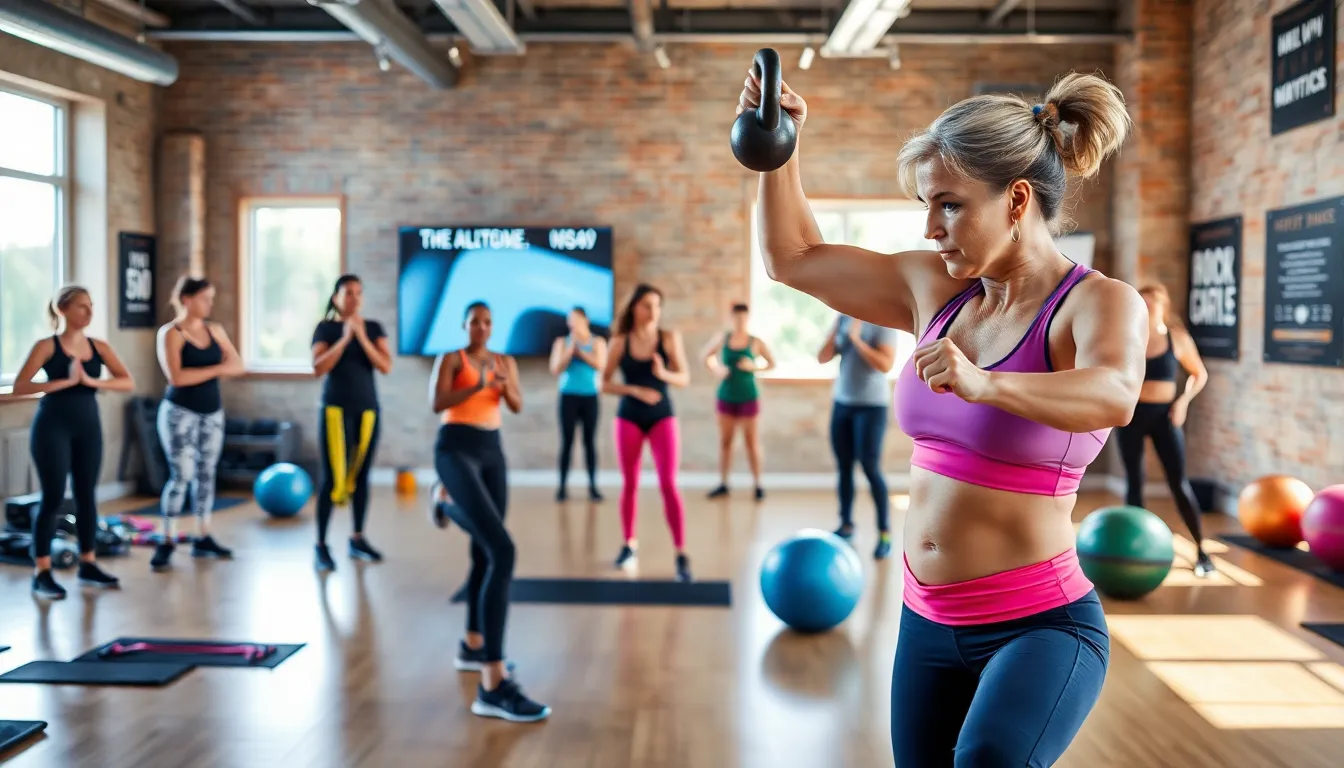As the fitness landscape rapidly evolves, staying updated with the latest trends is crucial for anyone looking to optimize their training regimen. Whether you’re a seasoned athlete or just starting your fitness journey, understanding contemporary practices can significantly enhance performance and enjoyment. This article delves into emerging fitness training trends, the community aspect of workouts, nutrition’s critical role, and the mental strategies that promote success in fitness. Let’s explore the latest in fitness training and how these trends can transform your approach to health and wellness.
Table of Contents
ToggleOverview of Fitness Training Trends

The Rise of Functional Training
Functional training has surged in popularity as fitness enthusiasts and athletes alike recognize the benefits of exercises that mimic everyday activities. This training style focuses on movements that engage multiple muscle groups and improve overall body mechanics. By emphasizing strength, balance, coordination, and flexibility, functional workouts enhance performance in a variety of sports and activities.
Trainers often incorporate elements such as kettlebells, resistance bands, and bodyweight exercises to create dynamic routines that challenge participants physically and mentally. The goal is to train the body to perform practical movements with ease, making functional training a staple in many gyms and fitness studios.
Incorporating Technology in Workouts
The integration of technology into fitness training has transformed how individuals approach their workouts. Wearable devices like fitness trackers and smartwatches allow users to monitor their heart rates, track calories burned, and analyze performance metrics in real time. This instant feedback helps individuals make informed decisions about their routines and progress.
Also, online platforms and mobile apps have become invaluable resources, offering guided workouts, virtual classes, and interactive challenges that increase engagement. With technology continually advancing, it’s clear that it will play an increasingly significant role in fitness training.
Group Fitness Classes: Community and Motivation
Benefits of Group Workouts
Group fitness classes provide a unique sense of community that can significantly enhance individual motivation. When individuals work out together, they not only create a supportive environment but also push each other to achieve their goals. This camaraderie often leads to a more enjoyable workout experience, making it easier for participants to stay consistent in their fitness routines.
Also, many find that group settings foster healthy competition, which can further motivate participants to push their limits. The accountability factor, knowing that others are reliant on each other’s presence, can be just what someone needs to commit to their fitness journey.
Popular Group Training Formats
Several group training formats have gained traction in recent years, each offering distinct benefits. High-Intensity Interval Training (HIIT) classes are extremely popular due to their effectiveness in burning fat and improving cardiovascular fitness in short bursts of high-energy exercises.
Similarly, yoga and Pilates classes provide opportunities for participants to enhance flexibility, core strength, and mental focus. Boot camp classes combine elements of strength training and cardio, creating an exhilarating atmosphere that resonates with many fitness enthusiasts. As fitness studios continue to adapt, the variety and accessibility of group formats only increase.
Nutrition’s Role in Fitness Training
Meal Planning for Optimal Performance
Nutrition is a cornerstone of any fitness program, and understanding how to fuel the body right can make a significant difference in performance. Meal planning enables individuals to structure their diets around their training schedules, ensuring they consume the necessary nutrients to support their workouts.
Balancing macronutrients is critical: carbohydrates fuel energy, proteins aid in muscle repair, and fats support overall health. Many athletes prioritize nutrient-dense meals that include whole foods, fruits, vegetables, whole grains, lean meats, and legumes, while aiming to avoid processed foods that can hinder performance.
Supplements and Hydration Strategies
Plus to a well-rounded diet, dietary supplements can offer an extra edge for those engaging in rigorous training. Common supplements like protein powders, BCAAs, and omega-3 fatty acids can help support muscle growth, recovery, and inflammation reduction.
Hydration is also vital: proper water intake before, during, and after workouts is essential for optimal performance and recovery. Many people now use electrolyte drinks to replenish lost minerals and maintain energy levels during intense training sessions.
Mental Aspects of Fitness Training
Setting Realistic Goals
The psychological component of fitness is often overlooked but is essential for long-term success. Setting realistic and attainable goals can significantly impact motivation and progress. Instead of vague aspirations like “getting fit,” individuals are encouraged to establish specific, measurable, achievable, relevant, and time-bound (SMART) goals.
For example, running a 5K in under 30 minutes or increasing strength in major lifts by a certain percentage within a set period provides clear targets to aim for. This structured approach helps track progress and boosts confidence as individuals accomplish their milestones.
Building a Positive Mindset
Cultivating a positive mindset is equally important in fitness training. Embracing challenges rather than fearing them can foster resilience and persistence. Techniques such as visualization, affirmations, and mindfulness can aid in developing a constructive approach to workouts. By focusing on the positives and celebrating progress, individuals can train their minds just as effectively as their bodies, leading to a more enriching fitness experience.
Conclusion
To conclude, the latest trends in fitness training reflect a shift towards more holistic and integrated approaches, emphasizing not just physical strength but also mental resilience and nutritional balance. Functional training, the use of technology, group dynamics, and a focus on nutrition are all critical components elevating today’s fitness endeavors. As individuals continue to navigate their fitness journeys, embracing these trends can lead to improved performance, heightened enjoyment, and lasting results. Eventually, staying informed and open to new strategies is key to making fitness a fulfilling and sustainable part of one’s lifestyle.





